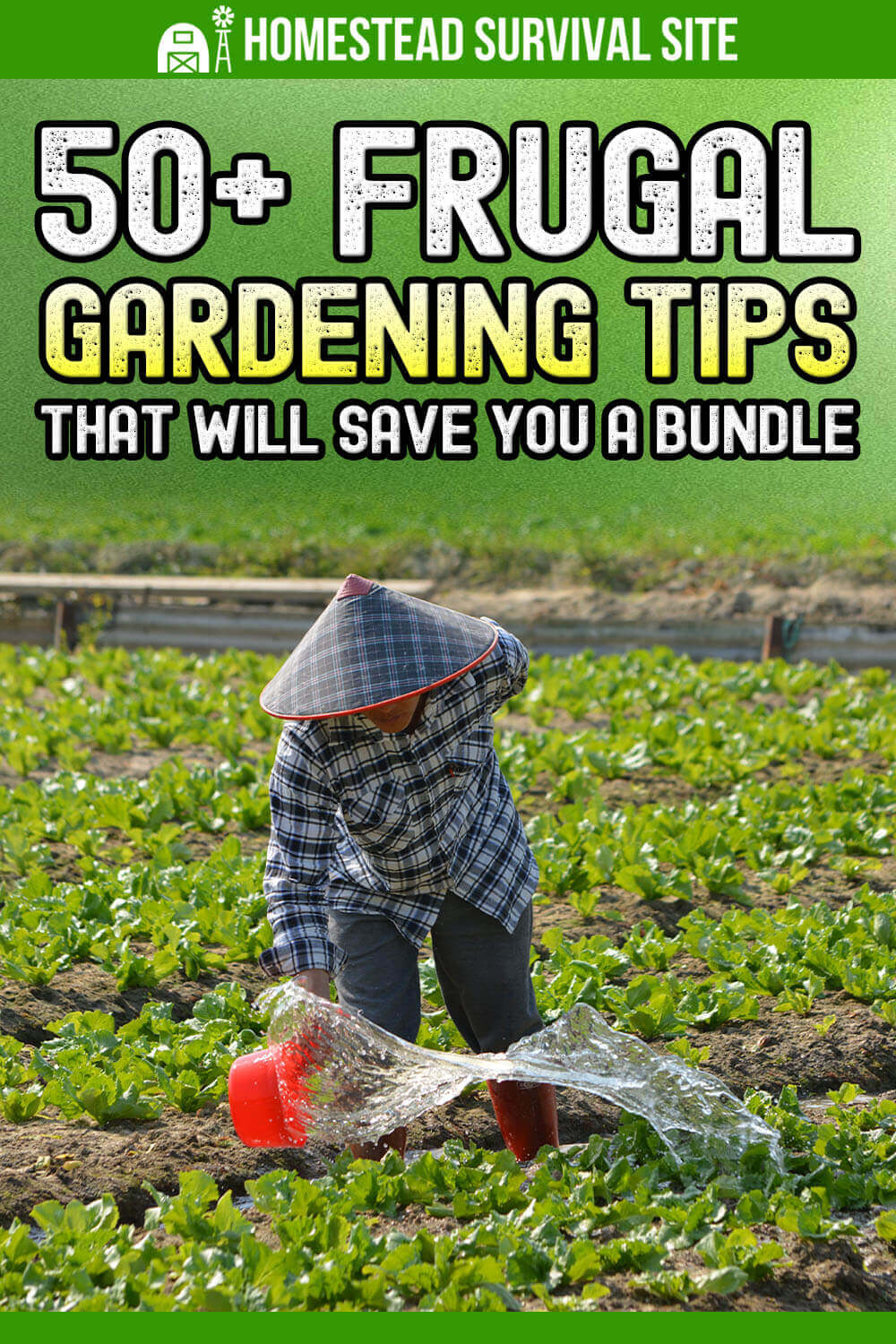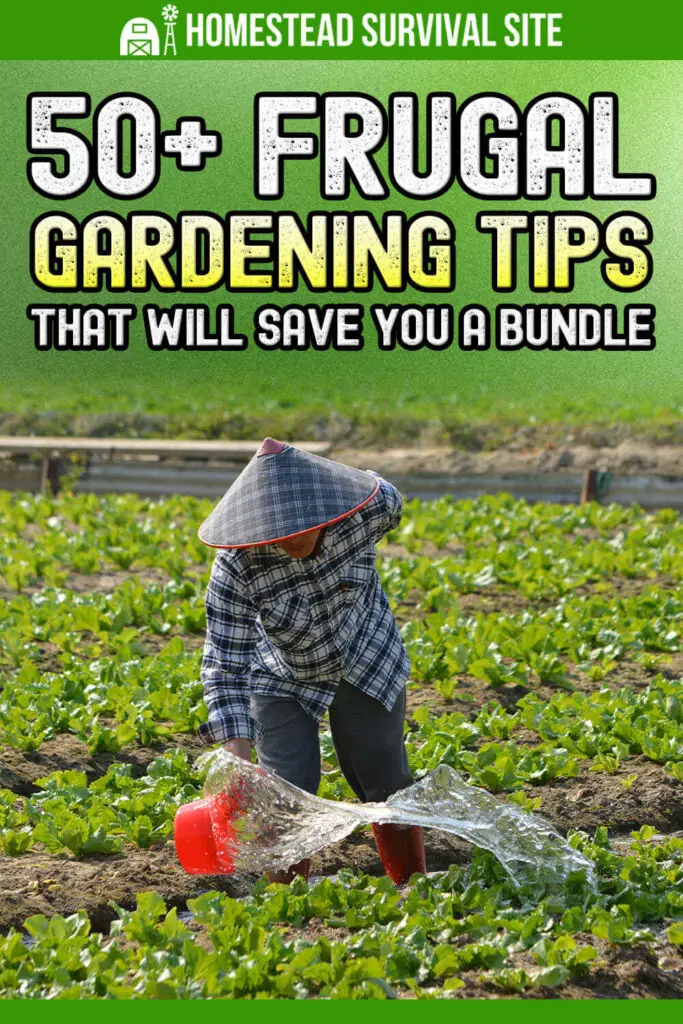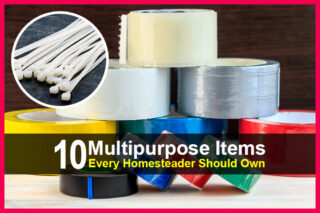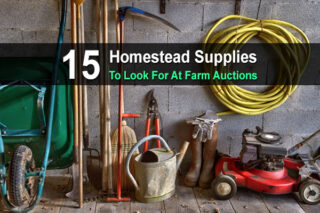Estimated reading time: 15 minutes
Perhaps you’ve heard of The $64 Tomato by William Alexander. In it, he shares the details of just how expensive gardening can be when you are trying to create the perfect garden with the ideal produce.
However, the problem is that this kind of gardening isn’t sustainable. It isn’t enough to get you through any type of crisis, it won’t really feed your family, and it isn’t sustainable gardening. But don’t worry, there’s a solution for that!
In this article, we’re going to give you plenty of ways to garden frugally and save money. Gardening frugally is about spending as little money as possible while maximizing as much yield as possible. Growing healthy, productive plants for less money is the goal of a frugal gardener.
Want to save this post for later? Click Here to Pin It On Pinterest!
Choose The Right Plants
Don’t fight your hardiness zone and climate
Instead, choose plants that will do well in your hardiness zone, climate, and type of soil. Otherwise, it will be too hard for them to grow, and they’ll be more likely to die and need to be replaced. You can find your hardiness zone here.
Then, try purchasing plants from the closest nursery so that they are well-suited to your local climate, and avoid buying exotic varieties that are expensive and difficult to grow. This way, you won’t waste money on plants that just won’t grow or produce for you.
Choose types of vegetables that are expensive to purchase at the grocery store or that don’t last long in storage
For example, lettuce, leafy greens, and leafy herbs are expensive to purchase per pound, and they go bad quickly once you bring them home. However, they grow easily and don’t take up a lot of space in your garden. As a result, you’ll save the most money growing these types of veggies rather than other, more challenging to grow varieties.
Choose quick-growing plants that you can grow again and again throughout the season
You’ll get more bang for your buck from vegetables that go from seed to harvest quickly, such as radishes, lettuce, and beets. Then, as soon as you harvest them, you can replant them. Or succession plant for a steady stream of produce.
Choose high-producing plants
Some plants just naturally produce a lot of fruit. Plants such as squash, zucchini, and tomatoes can easily produce more fruit than you need. Make sure to harvest early and often for the most tender squash.
Choose high-calorie, nutrient-dense plants to fill up your family
Higher calorie vegetables will give you a fuller stomach, such as potatoes and sweet potatoes.
Choose perennial plants that you only need to plant once
Perennials may cost a little more upfront, such as mint, berry bushes, or fruit trees, but they will provide you with fruit or herbs for years to come, making them worth the investment.
How to Save Money on Your Garden Bed
Try double-digging vegetable rows
You don’t need to create fancy fences or hire a crew to till for you. Instead, you can have loose garden soil with a little effort by double digging your garden beds. Only do as much as you need to save on effort.
Build raised beds with materials you already have or can get for free
Raised beds don’t have to be fancy. You can use whatever items you have lying around. For example, spare tires and old plastic baby pools can be filled with dirt to make free raised beds.
You could also build them with old, free lumber or piles of rocks for edges. I edged my raised beds with extra firewood logs for a cute, rustic look. It keeps the soil contained but didn’t cost me anything extra.
Don’t use raised beds at all
You really don’t need raised beds to grow food. As long as you can clear the weeds and grass from the soil, you can grow there. Of course, you can always create hills, mounds, or rows in your garden.
How to Save Money on Garden Tools

Shop smart
Try yard sales, thrift stores, and even the dollar store to find inexpensive garden tools. Dollar stores often sell garden gloves, hand trowels, small pots, and watering cans to get you started.
Borrow from a friend
If you can’t afford a tiller, ask if you can use a friend’s or rent one from your local small engine shop. Or offer to trade with someone on Craigslist – perhaps you can mow their yard while they till your garden for you.
Use the lasagna method
The lasagna method is a way of layering cardboard and yard waste to provide a weed-free, nutrient-dense way of gardening. You won’t need to till or dig so your smaller, inexpensive tools will work. You can probably get the materials for the lasagna garden for free. Find out how to make a lasagna garden here.
Save money on containers
Container gardening is a great way to maximize a small space. You don’t have to purchase expensive containers, though. Instead, you can garden in five-gallon buckets, old pots, baby pools, or whatever old pots and containers you can get at yard sales or find for free. Sometimes, bakeries will give away food-grade five gallon buckets for free or cheap.
How to Save Money on Seeds and Plants
Dollar Store seeds
You might be surprised that the dollar store sells seed packets. Their inexpensive seeds may have a slightly lower germination rate, but they will grow!
Find a seed swap
Seed swaps are a great way to save money on seeds. Basically, anyone participating in the swap sends their seeds to the host. The host then divides them up and sends them to whoever wants them. These are a great way to get local seeds, rare seeds, or just share extras. You can find some great seed exchanges here.
Shop the grocery store for seeds
This might be my favorite way to spend money on gardening! There are lots of things you can grow right from the grocery store. For example, you can purchase 2 pounds of dried beans for just a couple of dollars, and you can plant them!
Seeds from squash and zucchini, plain sunflower seeds, and even tomatoes are just a few plants that you might be able to grow. You can also grow ginger, Jerusalem artichokes, and other tubers.
Save seeds
If you’ve had a garden in the past, you can save your own seeds to use in the next year's garden. Seed saving takes a little practice, but it can save you a lot of money! Check out this article on how to harvest your own seeds.
Grow your volunteers
If you have a compost pile, you’ll likely get a bunch of volunteer plants sprouting in the compost. This happens to me every year! If you are careful, you can transplant those volunteers right from the compost pile and into your garden.
Over the winter, I toss leftover veggies into my raised bed to create compost. Then, in the spring, I always get a few volunteers – usually tomato and squash plants – that give me healthy plants and great produce.
Plant from your kitchen
Did your potatoes sprout by mistake? Don’t worry, just plant them! Have a few too many sweet potatoes? Let them sprout and make your own slips. Did your onion sprout? It won’t grow more onion bulbs, but it will grow more onion tops, which are edible.
Split perennials before planting
If you purchase perennials to grow, see if you can split them (without doing damage). This will give you two plants for the price of one.
Cut potatoes in half before planting
If you buy seed potatoes, cut them in half before you plant them. Just make sure both halves have eyes.
Purchase bare root plants
Strawberry plants, blueberries, and other types of plants can be very expensive. However, you can save money by purchasing bare root plants in early spring. They’ll just take a little bit longer to get established.
Avoid organic, if necessary
If money is really tight, don’t buy organic seeds. You can still grow them organically if that’s what you prefer, but seeds labeled as organic are more expensive than non-organic seeds.
Ask friends for extras
People often don’t plant an entire packet of seeds, so don’t be afraid to ask your friends for their leftovers. They’ll probably be happy to share!
Start your own seeds instead of buying plants
Buying starter plants is expensive, but you can start your own seeds very inexpensively. Roots and Refuge Farm provides a tutorial on how to start seeds in red solo cups.
Look for sales
Watch for sales and great deals. For example, nurseries and big box stores often discount vegetable plants when they’re ready to bring in fall-oriented flowers.
Use EBT/SNAP
In many states, you can use your SNAP benefits (formerly known as food stamps) to purchase seeds or plants that will grow food as long as the retailer accepts food stamps.
How to Save Money on Mulch and Fertilizer
Ask for free or cheap mulch
Local arborists may be looking to unload mulch. Try getchipdrop.com to see if the program is available where you live. Also, check with your local township. Sometimes they have free piles of mulch and compost that they have collected as yard waste. All you have to do is pick it up.
Use chop and drop weeds instead of mulch
You don’t actually have to use mulch. You can chop and drop weeds, cover crops, and spent vegetable plants as long as you cut them down before they go to seed. Just chop them and leave them right where they are. Then, push them aside to plant, just like you would with mulch.
Plant close together
You can plant some vegetables close together to prevent weeds from popping up. For example, lettuces and salad vegetables do well when closely planted as long as they get enough water and nutrients.
Use companion planting, so you don’t need mulch
Companion planting works well in place of mulch. For example, a three-sisters garden involves planting corn, squash, and beans together. The beans grow on the corn stalks while improving the soil. The squash shades out weeds, saving you on mulch.
Create your own compost
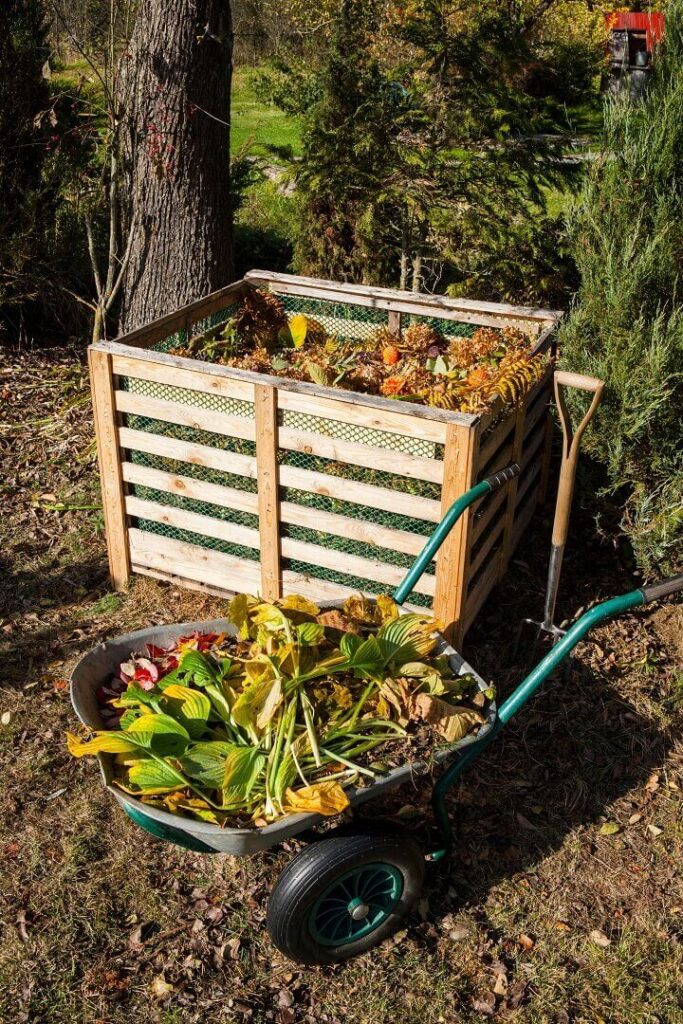
If you don’t compost, you’re missing out on a wealth of free fertilizer. You don’t need fancy compost bins to accomplish this.
Instead, you can just create a compost pile. Better yet, put the pile where your chickens can access it. Then, they’ll turn it and fertilize it for you! We have a detailed article on making compost right here.
Make compost tea
You don’t have to pay for expensive fertilizer if you make your own compost tea. Here's how.
Save your urine
If you’re really into sustainability, you might be looking for ways to deal with human waste as well as gardening. Well, you’re in luck because human urine also makes fertilizer. Check out this article for details.
Consider raising a couple of rabbits or goats for their manure
If you have a pet bunny, you have the best kind of natural fertilizer. In the winter, I put my outdoor rabbit hutch over top of one of my raised beds near the house. The poo falls down to the dirt, and in the spring, I mix it in.
Rabbit manure and goat manure aren’t ‘hot’ like chicken manure, so you don’t have to worry about them burning your plants. Rabbit manure is well worth the cost of feeding a rabbit! Of course, if you would prefer to use chicken manure, that’s fine, but it needs to be composted for about a year before you can put it on your plants.
How to Save Money on Soil
Use nitrogen fixers
Plants need nitrogen to grow. Some plants are nitrogen-fixers because they can adjust the amount of nitrogen in the soil, making it more available to plants when they need it. You can improve your soil by planting some of these plants in your garden. Here are a few examples of nitrogen fixers that you can grow.
Mix in compost
Compost is great for the soil. It improves aeration, adds nutrients to the soil, and improves drainage. Create your own compost piles for free, then mix them into your soil when it is ready.
Till in biomass
Biomass is just a fancy way of talking about dead plants that you can mix into your soil. So when you till or dig your garden, mix in plenty of biomass to add nutrients and drainage to your soil. This could be pine needles, old leaves, twigs, or weeds.
Grow your own earthworms
Worm castings will make your soil rich and nutritious for your plants. You can grow your own worms in a bin for very little investment and then use the castings to sidedress and fertilize your plants.
Fill your raised beds more cheaply
Filling raised beds with soil or topsoil can get expensive fast. But it isn’t necessary. Try a little hügelkultur. Fill the bottom of your raised bed with a layer of compost to keep down weeds, then pile in some rotted logs, twigs, or dead branches.
This will take up some room in the bed and provide nutrients for your plants. Then fill with soil. Conversely, if you don’t want to use logs, you can dig a trench in the middle of your raised bed and fill it with compost or biomass, then cover it with a layer of soil.
How to Save Money on Watering
Plant close together
If you keep your plants close together, they’ll shade the ground from the sun, which will slow down evaporation. As a result, you won’t need to water as frequently.
Use mulch
Mulch – either actual wood chips or chop and drop weeds – will hold in moisture as well as prevent evaporation. Even better if you can get free mulch to do the job.
Plant drought-hardy plants
Many types of vegetables are drought-hardy once they are established. Look for drought-hardy varieties so you can cut down on watering.
Water plants at the base
Don’t waste water by pouring it over the leaves—instead, water at the bottom of the plant to save water.
Collect rainwater
If it is legal to do so, set up a free or cheap rain barrel to collect water for your vegetable plants. You can even make a rain barrel from a clean trash can.
Save Money on Trellises and Fencing
Find Used Fences
Fencing is one of the most expensive parts of gardening. If you can’t skip the fence altogether, try looking on Craigslist or Facebook marketplace for a used fence. You may have to take it down yourself, but it will save you big bucks if you need it.
Don’t buy expensive garden stakes – use what you have
You don’t need fancy garden stakes to stake your tomatoes or other veggies. Instead, any small pieces of lumber, PVC pipes, rebar, or old fencing can be used to tie your veggies up.
Create a cheap trellis
If you have a cattle panel lying around (or have access to a cheap one), you can use it to create an easy trellis. Stake it upright to grow peas, beans, or tomatoes on. Or bend it in the middle to make an overhead trellis, staking each end in a raised bed. Watch MIGardener make a trellis from a $25 cattle panel.
How to Make Your Garden More Productive

Plant pollinator plants nearby
Plant flowers near your garden to attract pollinators. The more the blossoms on your plants are pollinated, the better your harvest will be. For example, planting marigolds all around your garden will help deter pests like rabbits and caterpillars while attracting bees that will help pollinate your vegetables.
Attract beneficial insects
Beneficial insects will help control the pests that eat your vegetable plants. You can find a list of plants that will attract these insects here.
Companion plant
Try companion planting to increase the biodiversity (which will over pest pressure) and increase yields. Try some of these companion planting ideas.
Keep your garden watered
If your garden gets too dry, it will stress your plants. Keep them well-watered so they don’t waste their energy fighting to stay alive.
Avoid Garden Busters
Be wary of using hay in your garden
Some hay is grown with herbicides and pesticides that will kill your garden (and the same goes for the manure of the animals that eat it).
Keep weeds under control
You don’t need to eradicate every weed in your garden, but do keep them under control, so they don’t compete with your plants for resources. This will result in spindly plants that don’t produce well. However, leaving a few weeds will increase the biodiversity in your garden, which may reduce the pest pressure on your vegetable plants.
Don’t purchase an expensive greenhouse if a hoop house will do
Greenhouses are a great way to extend the growing season so you can grow more vegetables. However, they are pricey. With a little bit of ingenuity, you can build a cheap hoop house like this one.
It provides the same benefits at a fraction of the cost. Additionally, you may need a permit to install a permanent greenhouse, but hoop houses usually don’t require one because they aren’t permanent structures.
Create row covers with hula hoops
If you need row covers for warmth, or shade covers to grow cool weather crops, or even netting to protect your strawberries, you can do so with cheap hula hoop row covers. Read more here.
Get creative!
You don’t need to spend lots of money on your garden – you just need to use a little creativity and some old-fashioned elbow grease to grow great vegetables with frugal gardening.
Like this post? Don't Forget to Pin It On Pinterest!

